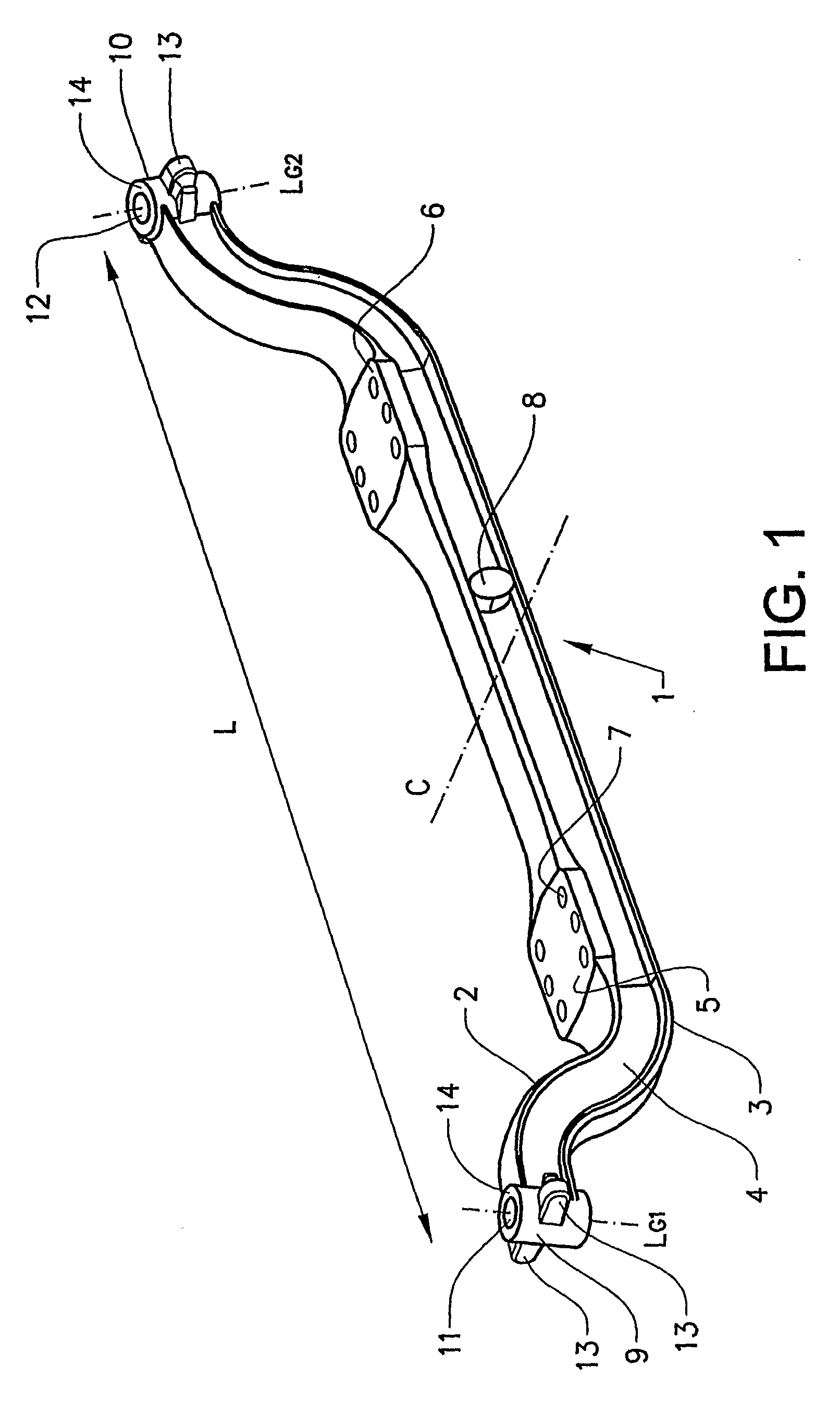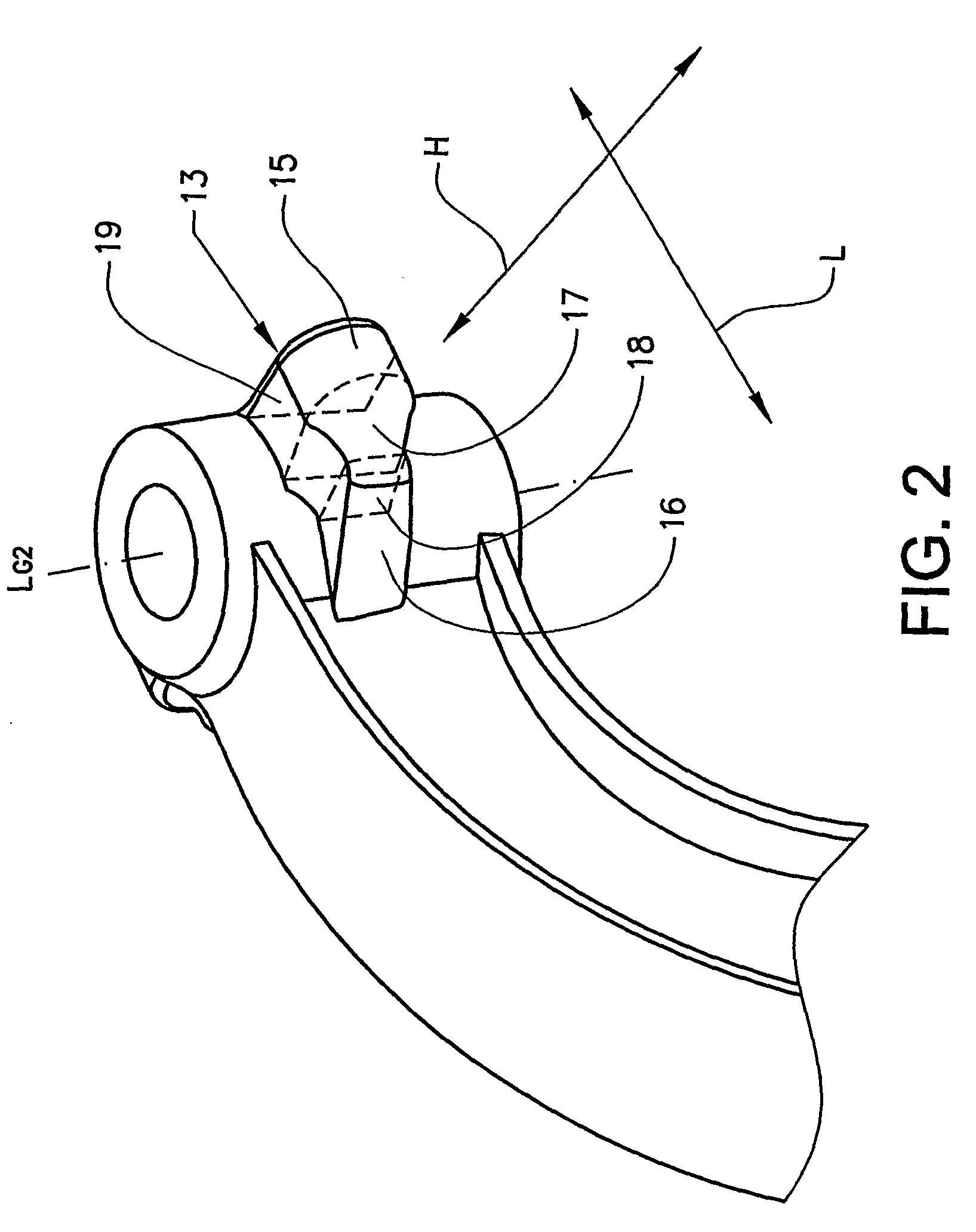Blank For an Axle Beam, Wheel Suspension Comprising an Axle and a Method For Manufacturing an Axle
a technology of axle beams and axles, which is applied in the direction of wheel-axle combinations, steering links, transportation and packaging, etc., can solve the problems of increasing handling costs, difficult to configure rods and fastenings with sufficient precision, and increasing the difficulty of changing a decision. , to achieve the effect of reducing the risk of tilting, good stability and good precision
- Summary
- Abstract
- Description
- Claims
- Application Information
AI Technical Summary
Benefits of technology
Problems solved by technology
Method used
Image
Examples
Embodiment Construction
[0022]In FIG. 1 is shown a blank 1 for an axle beam intended to support a wheel axle. The blank for the axle beam 1 extends in a substantially longitudinal direction L and has an upper and a lower flange 2, 3, which flanges extend in the longitudinal direction and are connected by a rib 4. The axle beam can conventionally be straight or have an extent in a plane through the rib which deviates from a straight beam, for example somewhat U-shaped as in the illustrative embodiment shown. Deviation from a straight axle beam is used in order easily to vary the frame height of the vehicle to which the axle beam is fitted. The axle beam also has fastening surfaces 5, 6, which are intended to be fastened to a beam structure present in a vehicle. The fastening surfaces have bushings 7, intended for the fitting of fastening elements for fastening the axle beam to a beam structure of a vehicle. In addition, in the embodiment shown, close to a midpoint C, with respect to the longitudinal directi...
PUM
 Login to View More
Login to View More Abstract
Description
Claims
Application Information
 Login to View More
Login to View More - R&D
- Intellectual Property
- Life Sciences
- Materials
- Tech Scout
- Unparalleled Data Quality
- Higher Quality Content
- 60% Fewer Hallucinations
Browse by: Latest US Patents, China's latest patents, Technical Efficacy Thesaurus, Application Domain, Technology Topic, Popular Technical Reports.
© 2025 PatSnap. All rights reserved.Legal|Privacy policy|Modern Slavery Act Transparency Statement|Sitemap|About US| Contact US: help@patsnap.com



